Nichole Louise's Blog, page 8
October 1, 2023
RAVEN ROCK IS OUT NOW
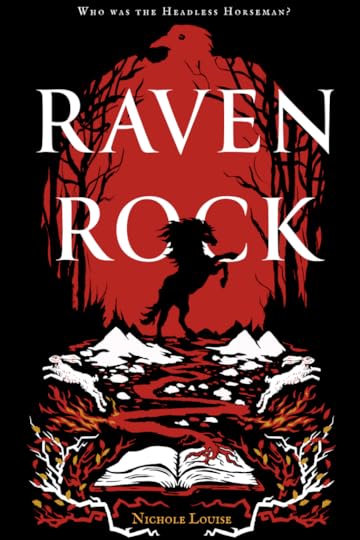
Raven Rock is now out on all platforms, both print and ebook formats! I will also be selling it in person at events.
Please leave a review on any platform as reviews help indie authors tremendously in building readership.
Thank you!
September 28, 2023
Review: The Vaster Wilds by Lauren Groff
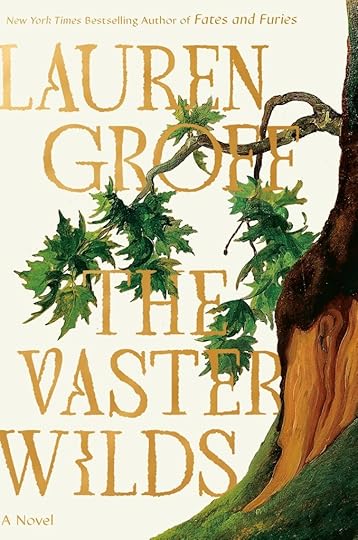
I first fell in love with Lauren Groff’s writing with her 2006 Atlantic short story “L. DeBard and Aliette.” It has stuck with me since I first read it in graduate school, yet for some reason I haven’t actually read any of her novels until The Vaster Wilds (Matrix has been on my to-read list for ages!)
The Vaster Wilds is quite a self-contained story, following a girl (simply known as “girl,” but by numerous other names throughout her life, such as Lamentations.) Through contextual clues, we find that the girl has fled the famine and disease-stricken Jamestown settlement after she has committed a crime. The girl’s strong-willed drive for survival is the spark the ignites her journey and keeps her fire burning through adversity in the wilderness.
Through starvation, disease, injuries, harsh weather, and much more, the girl’s ingenuity keeps her alive. Perhaps it is obvious to say, but the girl’s flight through the harsh wilderness is also very much a journey through her own mind and memories. She was purchased as a type of “pet” for her former mistress; a person forced to be an object or play thing. A person forced to journey across an ocean and care for a young child. A person forced to witness and endure terrible hardship. The harsh reality of the girl’s life in “civilization” was perhaps far more trying than anything the untamed wilderness hurls her way. For in civilization she was bound, yet in the wilderness she is free.
Lauren Groff’s writing style is unique, poetic, and beautiful. Perfect and poignant in her phrasing. I watched the movie Beau Is Afraid around the same time I was finishing this novel, and I can’t help but draw similarities in the abstract journeys both physical and emotional, both bizarre and beautiful.
September 24, 2023
Review: Queen Hereafter by Isabelle Schuler
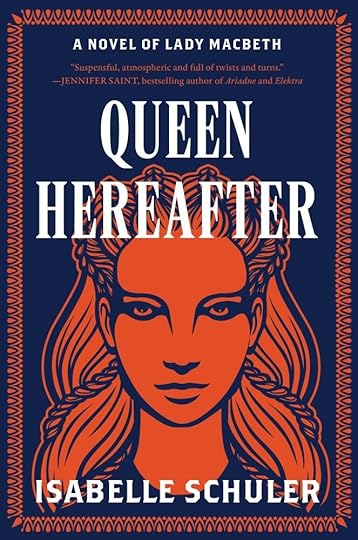
Queen Hereafter by Isabelle Schuler reimagines Lady MacBeth pre Macbeth. An heir to the crown of Alba with Pict heritage, young Gruoch lives her life according to a prophecy made by her Druid grandmother that she will inherit the crown and be remembered for ages to come. Gruoch is often blinded by this prophecy, even forsaking her own chance at true love and happiness when, as a teenager, she first has the opportunity to marry young MacBethad. Instead, she opts to marry his cousin Duncan who is the direct heir to the crown.
Gruoch is not necessarily a likeable character, but her at-all-costs survival skills are to be respected. At the same time, her actions and the way she treats others does not leave the reader with much empathy for her (perhaps that’s the point, given the play.) Gruoch’s blindness to her grandmother’s prophecy drives her to make decisions that not only seem morally gray, but also counterintuitive to her own well-being and happiness. Gruoch is right to mention to male characters that she does not necessarily have the luxury to choose happiness, but on the other hand, she seems drawn to walking the harder road if it means winning the crown. Not many of the other characters are terribly likeable save Gruoch’s surrogate mother (MacBethad’s mother) and Gruoch’s servant. MacBethad himself seems okay, but we don’t see him a lot in this book as it follows Gruoch’s life.
Queen Hereafter ends with the beginning of the ultimate plot for the crown, but I found the conclusion to be quite abrupt.
Queen Hereafter will be released in the US on Oct 10, 2023.
September 5, 2023
Review: Benjamin Franklin’s Bastard by Sally Cabot
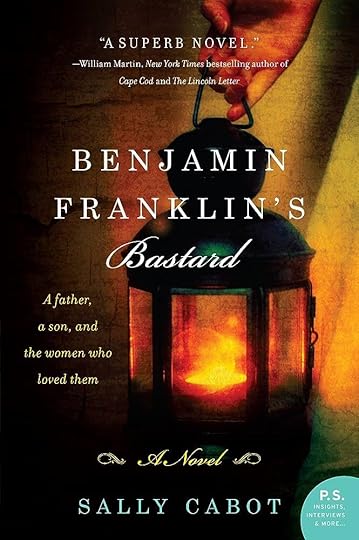
Benjamin Franklin’s Bastard by Sally Cabot begins in 1730s Philadelphia with Deborah Read meeting Benjamin Franklin. Their brief courtship is cut short when Franklin journeys to London for a time. When he returns, he meets a tavern serving girl named Anne. While Deborah and Benjamin are obviously historical figures, Anne is not. Rather, she is a creation of the author since history has not recorded the true name and background of the mother of Franklin’s “illegitimate” son, William.
Since Anne cannot provide a financially stable life for William, she warily hands him off to Benjamin to raise with his new “wife,” Deborah. I say wife in quotations because Deborah and Benjamin were never legally married–she later, after seven years, became his common law life. The reasoning behind this action was that Deborah had previously been married, but her first husband abandoned her without giving her a proper divorce. She (and many women of that time in that situation) was essentially stuck in a social no-(wo)man’s land in that she could not legally marry another (and thus be provided for.) That said, it is still quite remarkable and speaks to Franklin’s unique personality that he wanted Deborah to live with him as his wife without the legal marriage. Adding to his personality, Cabot details Franklin’s many experiments, personal educational endeavors, and a mind that certainly marched to the beat of his own drum. Franklin says many times in the novel something to the effect of, “I am a monogamous being, not celibate” – which accounts for his ongoing relations with Anne even after his “marriage” to Deborah.
I thoroughly enjoy Anne’s pov chapters, as they reminded me of Emma Donaghue’s Slammerkin, which is one of my favorite books. The author also had more creative license with this character since she was a fabrication. Although Anne is perceived by many as “low” and a street whore, she is clever and business-savvy, as well as able to find to ways see William while navigating Deborah’s ever-watchful presence. Although, the reader fully feels Deborah’s resentment toward her husband, step-child, and the tide in which her husband’s life carries her, as well as her feelings of inadequacy against her brilliant husband’s intellect and accomplishments.
Franklin, like many other “Founding Fathers,” is complex. On a public level he was an inventor, political advocate, etc., but in his personal life he was at odds with those closest to him.
My only qualm with this novel is that is moved very fast in too short a count of pages, spanning 1730 – 1777, with many years and major events glossed over.
August 28, 2023
Review: Blindspot by Jane Kamensky & Jill Lepore
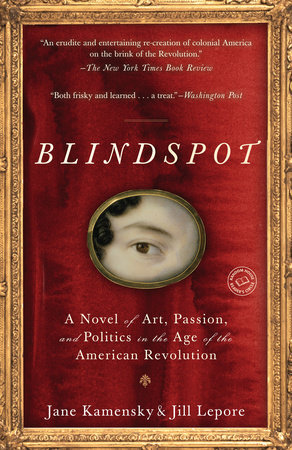
Blindspot by Jane Kamensky & Jill Lepore has been on my to-read list for a while, and I’m so glad I finally read it, because I loved it! Set in 1760s Boston, the novel follows Scottish painter Stewart Jameson (and his lovable Great Dane Gulliver!) and “fallen” woman Fanny Easton who disguises herself as a man by the name of Francis Weston to become Jameson “Jamie’s” painting apprentice. The plot is further set in motion by the return of Jamie’s old friend on the run, a British-raised African man named Dr. Ignatius Alexander.
At times, Blindspot reads like an 18th century novel a la Clarissa, with Jamie’s chapters referring directly to the reader. The novel also blends together articles from the Boston newspaper to offer contextual and historical details, and an epistolary narrative from Fanny’s perspectives in the letters she writes to her childhood friend Lizzie. Although written in the style of the time, Blindspot does not shy away from the scandal, taboos, and grittiness of the time. Jamie is essentially bi, falling for his apprentice whom he thinks is man, and openly admitting to the reader that he has had relationships with both men and women.
The poisoning of a local abolitionist, Samuel Bradstreet, sets into motion a murder mystery. In turn, an enslaved family who were once in the household of Fanny’s family stands accused. Jamie, Dr. Alexander, and Fanny/Weston work tirelessly to free the family, Cicero, Hannah, and Phebe, to clear their names and prove that a Samuel Bradstreet’s missing will ensure their freedom.
Blindspot is written with cleverness – I especially appreciated the witty dialogue between Jamie, Fanny, and Dr. Alexander. With such character-revealing dialogue, it was easy to become invested in their lives and the romance developing between Jamie and Fanny. Dr. Alexander is smartly written, as his character is a genius in his understanding of the world around him. Blindspot it also sexually explicit at times, which perhaps flies in the face of stereotypes of prudishness in historical fiction, but in my opinion is just very real and allows the reader to connect with characters–and people–who lived long ago and felt all the same things we did – and acted on them!
I’d really love to see this novel become a movie or mini-series!
Fun fact – not to be too spoilery, but this novel gives a nod to one of the first (?!) nudes sent by a woman to her lover.
August 24, 2023
Raven Rock Cover Reveal!
August 8, 2023
Review: Our History Has Always Been Contraband: In Defense of Black Studies
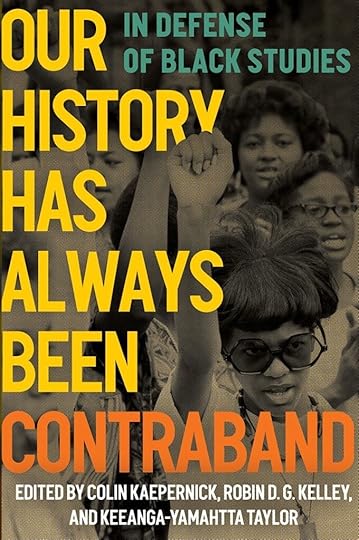
Our History Has Always Been Contraband: In Defense of Black Studies is a collection of essays co-edited by Colin Kaepernick and published through his press. This collection was very much compiled in response to the recent push back against CRT courses, as well as the atrocious state of education in Florida where Governor DeSantis and his administration have defunded college DEI departments, deemed AP African American History courses as irrelevant and unnecessary, and harmfully villainized CRT courses to the point where many people believe it it something it is not. To be clear, CRT–Critical Race Theory, is the teaching of true history, warts and all, about people from all backgrounds rather that the ultranationalist “history” of painting America as a perfect democracy of white people since its infancy.
The collection of essays pulls from works from the the mid-19th century through 2022, with works from famous names such as W.E.B. DuBois, Angela Davis, bell hooks, and many more. The relevance of the essays from 50 – 100 years ago to today is clear. While the topic and study of race has become more mainstream in recent years, there is still much work to be done.
A personal favorite of mine from this collection is “Reflections on the Black Woman’s Role in the Community of Slaves” by Angela Davis, written in 1971, which gives interesting historical background on Black women’s involvement in slave rebellions and demonstrations of activism within the social context of the time. I also found “Introduction from The New Jim Crow: Mass Incarceration in the Age of Colorblindedness” by Michelle Alexander, written in 2010, very educational in that it describes how Reagan’s “War on Drugs” began before the spread of drugs into Black neighborhoods and how it has been widely theorized that the CIA was responsible for bringing drugs into those neighborhoods to bolster the visibility and political narrative of Reagan’s “war.” Lastly, “History is a Beautiful, Ugly Story, and We Must Teach It” was written by Florida high school History teacher Marlon Williams-Clark in 2022 in response to the state’s decision to do away with the AP African American History pilot course. The title in itself encapsulates a large part of what CRT is.
I found this collection to be accessible in its language, although some of the essays may read too academic for a “lay person.” If a person would like to learn more about Black Studies, especially in the current climate of truly defending it, this collection of essays is a great starting point or primer on important writers and activists in this academic (but also life!) sphere.
August 1, 2023
Review: The Square of Sevens by Laura Shepherd-Robinson
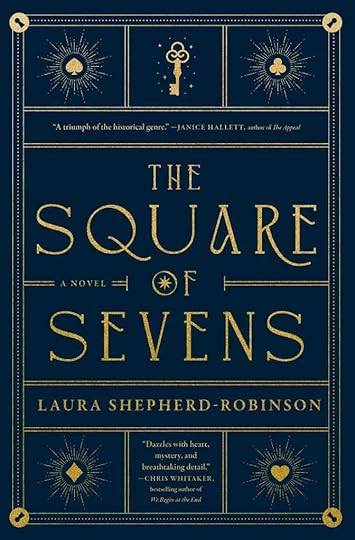
The Square of Sevens by Laura Shepherd-Robinson begins in 1730 with seven-year-old Red, daughter of a cunning man, as they travel the Cornish countryside telling fortunes. Red is knowledgeable of the mystical “Square of Sevens,” a type of tarot card fortune telling using playing cards. But when Red’s father dies and she is taken in by a good samartian, Mr. Antrobus of Bath, her life takes an unexpected turn. As the story unfolds, Red (now Rachel, ) begins to discover her true heritage–she is related to a powerful and wealthy family at the center of a heated inheritance court case.
Red/Rachel soon ingratiates herself with this family, traveling to their country home to tell fortunes–specifically the woman Red/Rachel believes to be her grandmother. Intrigue and mystery abounds as Red digs into the family’s sordid past using manipulations and tricks from her past, like lock picking, to discover documents holding the truths of the past. Meanwhile, her adversary, Mr. Lazarus Darke, tries to stay one step ahead of her to prove her presumed lies wrong.
I don’t want to give much away in this review as this book is filled with surprises, twists, and bombshells (especially toward the end!) What I will say, however, is that the story you think you’ve been reading the whole time isn’t actually the story. In fact, things turn quite meta toward the end (which is explained in the author’s note.) I think I’m fairly good at predicting story lines, and some things I did guess correct in Square, but all the twists toward the end I could not have predicted. Laura Shepherd-Robinson has so cleverly constructed this narrative and tightly packed its intricacies. There were a few times I got confused by little hints or details as Red uncovered her family mystery that I had to go back and read them, which I believe just goes to show how thoughtful and detail-oriented Laura Shepherd-Robinson was in writing Square. Not many books can make me stay up until the wee hours finishing it because I so badly want to know what happens next! I also clearly envisioned Square of Sevens as a mini-series as I was reading (think Harlots meets Poldark,) so I would love to see this picked up by a network!
The Square of Sevens is currently out in the UK and will be released in the US on Sept. 5, 2023
July 19, 2023
Review: The Wounded world – W.E.B Du Bois & The First World War by Chad L. Williams
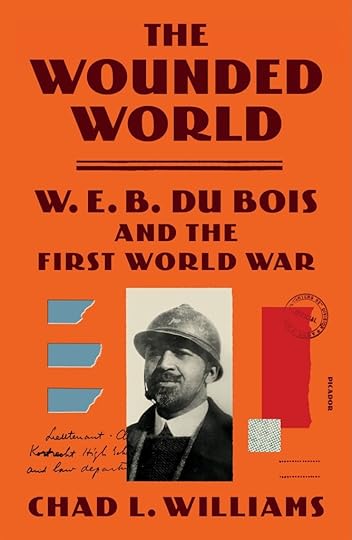
The Wounded World: W.E.B. Du Bois and The First World War by Chad L. Williams is a tome of invaluable knowledge concerning America’s race relations before, during, and after WWI. Williams’ book focuses on the saga of Du Bois’ life work in creating The Black Man and the Wounded Wolrd, an account of the experiences of black soldiers in WWI, which would after many decades and 1,000 pages go unfinished to this day.
America’s Selective Service Act came into effect May 18, 1917 which subsequently saw the registration of 2 million black men. However, due to the pressures of white southerners, black draftees could at first only be in the labor force. The NAACP fought back against this and eventually won the right for black men to fight. But it wasn’t that simple. 1917 was marked by push back against black men fighting in the military, the most contentious point being that white soldiers did not want to be commanded by black officers. On the home front, a race riot broke out in St. Louis in response to the influx of black workers to the city seeking war time factory jobs. The disturbing violence lasted 2 days, resulting in many dead and 7,000 residents displaced. Du Bois visited the wreckage days later and argued that the racist mob was far more violent and malicious than the Germans’ actions in WWI. In August, another racist mob attack occurred in Houston in response to an all black infantry training camp at Camp Logan.
In Europe, black soldiers were segregated from white soldiers and (despite the actions of the NAACP) largely assigned to service and labor work. There was one all black combat unit, but it was commanded by white officers. White officers used any excuse, overwhelmingly fabricated, to punish and humiliate the black soldiers. They were often arrested for “inefficiency,” accused of military failings, harassed by military police, arrested for alleged indiscretions, blamed for white officers’ mistakes, treated as prisoners, denied promotions, and the biggest and most pervasive accusation was that of rapes against Frenchwoman. The old racist trope of black men raping white women was well known in America at this time, and heavily influenced by the racist film Birth of a Nation and the go-to fabricated “excuse” for southern lynch mobs. This racist fabrication was so pervasive in France that the 92nd Division issued a general order in Dec 1918 restricting black soldiers from interacting with the French people, especially the women. In reality, white officers did not want the black soldiers to speak or interact with the French because the French people actually treated them with sympathy, kindness, and a measure of social equality that these men did not have in the US. In turn, the white power structure believed the black soldiers not only needed to be “taken down a peg,” but also wanted to prevent the black soldiers from, at all costs, bringing home any “ideas” of equality from France. As the author argues, all these components put “America’s racism on display for the world.”
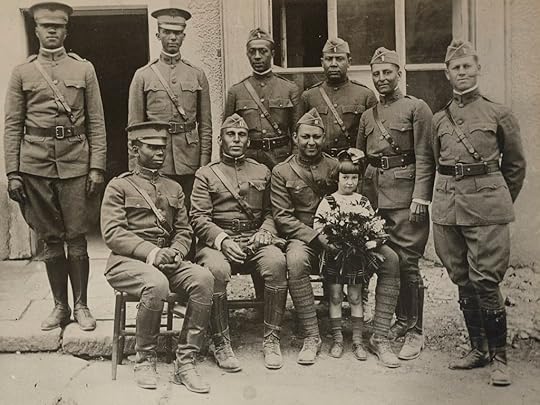
When Du Bois tried to report on these soldiers’ accounts of racism and fabricated accusations/crimes in his publication, The Crisis, the Postmaster General actually tried to suppress its distribution. In response to the issue’s publication, Du Bois received countless letters and photos from black servicemen which would eventually inspire and lead him to visit France in 1918 after the armistice to personally interview these men about their experiences. Of disillusioned soldiers returning home, Du Bois poignantly wrote, “We return. We return from fighting. We return fighting.”
The return of servicemen would spark what is now known as the “Red Summer of 1919,” in which several racist mob attacks and pogroms, filled with brutal and disturbing violence and lynchings, occurred across the nation. South Carolina, Arizona, Texas, and Washington DC all saw brutal attacks which led to a particularly brutal event in Chicago which left many dead, injured, and displaced. Red Summer inevitably bled into the Fall, with attacks in Knoxville and Omaha, Louisiana and Arkansas. In 1919 alone there were 76 lynching victims, 11 of which were returned servicemen. Amidst these nationwide racist attacks, President Woodrow Wilson did nothing and said nothing, which would inevitably set the stage for the notorious, brutally violent, and fatal 1921 Tulsa race massacre. The events of 1919 led many black activists and veterans to form their own organizations to fight for their rights, organizations of which were watched and under suspicion of Bolshevism by the American government. Du Bois himself had also been closely watched by the American government under the same suspicions when he went to France to interview soldiers.
Du Bois continued his work of documenting the black soldier experience in Europe, while at the same time black veterans were still facing racism and segregation at home despite the democracy they had served to protect overseas. Tuskegee essentially became the first black VA in 1923 in response to the little to no medical treatment of black veterans after the war. Veterans also began to grow impatient with Du Bois for still holding on to their letters, documents, and photos for his manuscript and by 1929 the manuscript had grown near 1,000 pages. Of the war and race, Du Bois wrote, “The world war was primarily the jealous and avaricious struggle for the largest share in exploiting darker races.”
Du Bois faced countless obstacles in seeking both funding and publishing due to the sheer volume and scope of The Black Man and the Wounded World. Competitive academic infighting amongst the community of black scholars and historians placed roadblocks in the path of writing and production. Over the years, Du Bois was also sidetracked by writing other books and historical studies. The author explains that decades on and beyond the second World War, Du Bois ultimately viewed The Black Man and the Wounded World as “too big, too disillusioning, too tragic…to reckon with the historical magnitude.” Williams’ study is a comprehensive and historically illuminating account and tribute to Du Bois’ massive, unpublished work–his life’s work.
What I found most striking about this work was its complete and utter relevance to today’s world. The events of 1918/1919 with the influenza pandemic and racial riots/attacks are nearly identical to our current period of the covid pandemic and race riots. I was astounded by how many writings and quoted sources of the time could have easily been from today and not 100 years ago.



